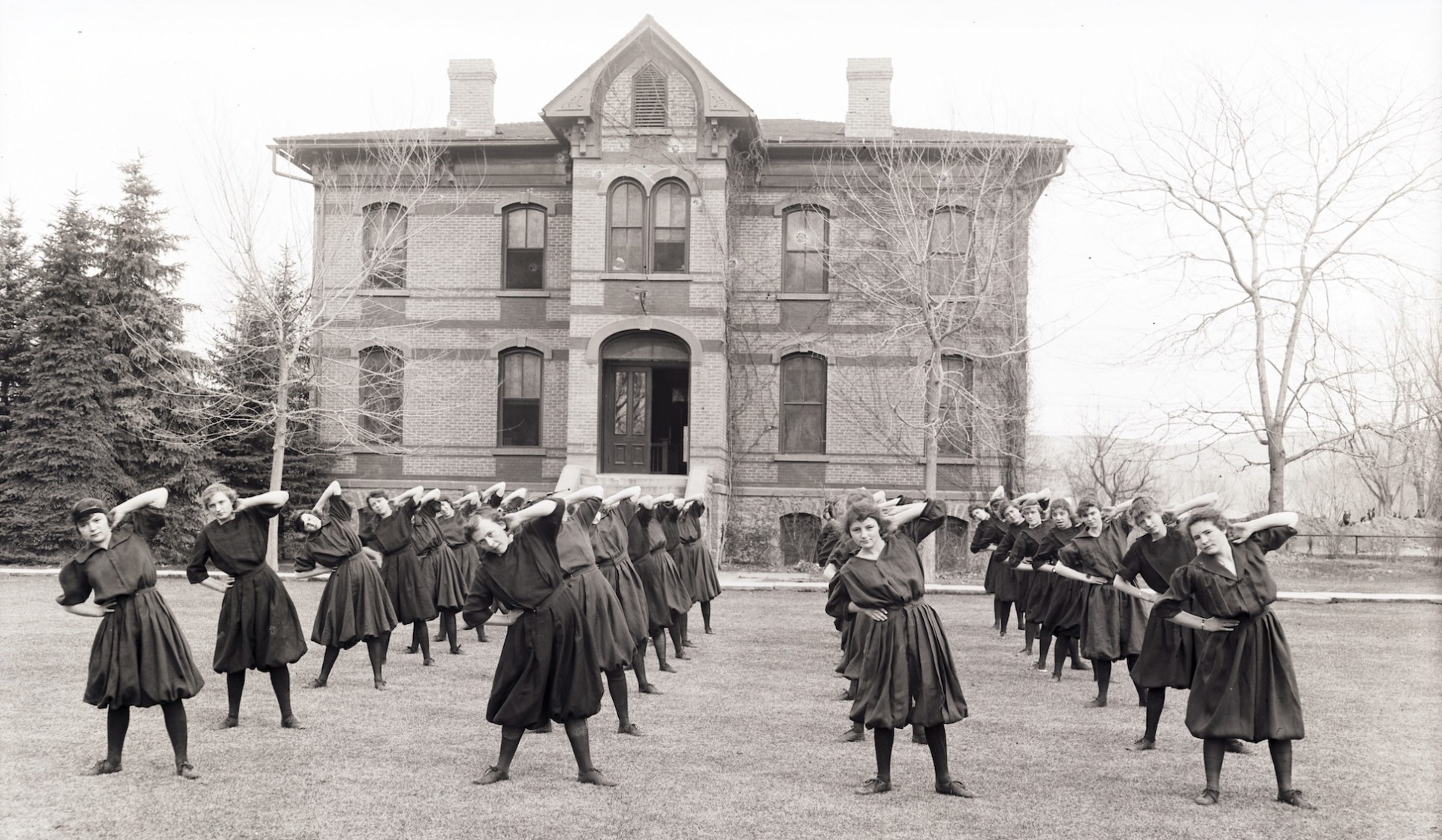
Students exercising in front the College Boarding Hall, now Spruce Hall, in 1915 or 1916. Despite being strictly separated, the men and women who lived in the dormitory still found ways to connect. Image courtesy University Archives and Special Collections
Maintaining proper social distance meant something entirely different to some of the first students at Colorado State University than it does to those on campus in 2021. The story of how young love overcame that distance centers on the building now known as Spruce Hall.
The University’s oldest standing building sits on the northeast corner of campus, near the busy intersection of College Avenue and Laurel Street. The Colorado Agricultural College (the original name of CSU) had been open for only a year in 1880 when it became obvious that on-campus housing for students was necessary.
To meet this need, the “College Boarding Hall” was built and furnished at a cost of $5,674. It opened in the fall of 1881, when college enrollment hit a high of 41 students. There were two upper floors for residents, and the basement held a kitchen, dining room, and housing for the cook.
Each of the residential floors had nine rooms, and male and female students were strictly segregated on separate floors. College President Elijah Edwards and his wife Alice moved into the new building so that she could serve as “Dormitory Matron” and keep a watchful eye on the young ladies living there.
Messages on a string
Forbidden from fraternizing with the lovely women living just one floor below them, the young men devised a clever way to send them messages. Addressing a note to one of the ladies, an enterprising student would tie the missive to a small rock and lower it by a long string to the level of the windows below. Gently swinging the rock until it tapped on the glass, he waited patiently while someone opened her window, untied the note, wrote a quick response, and attached it to the rock to be hauled back up.
Starting in 1885, the dormitory housed only female students, and the modern conveniences of electric lighting and steam heating were installed five years later. By 1893 the hall had been remodeled for use by the academic departments of physics, civil engineering and electrical engineering.
Named “Spruce Hall” in 1954 for the stately trees growing nearby, the building was placed on the National Register of Historic Places in 1978. A later addition to the north side, designed to complement the original architecture, more than doubled its size.
This February, as chill winds push bare branches against the old windows, does the sound echo the tapping of hopeful love notes from 140 years ago?
Linda M. Meyer is head archivist for the Agricultural and Natural Resources Archive at the CSU Libraries. She collaborated with historian Gordon A. Hazard and emeritus professor James E. Hansen II as a contributing author of CSU’s Sense of Place: A Campus History of Colorado’s Land-Grant University, the new reference book for historical information about every campus building constructed in Fort Collins prior to 2018. CSU’s Sense of Place is available online from the CSU Bookstore.